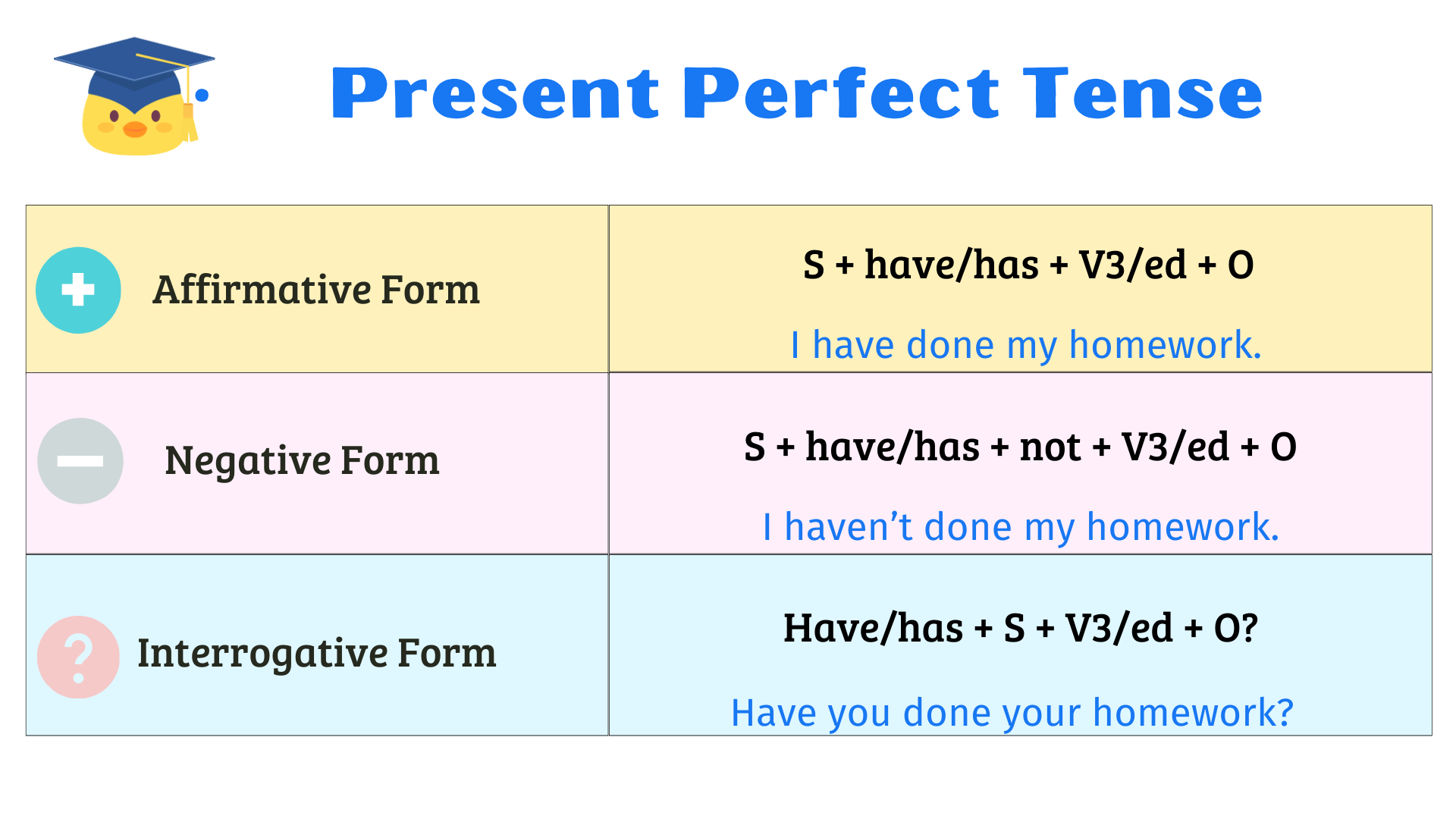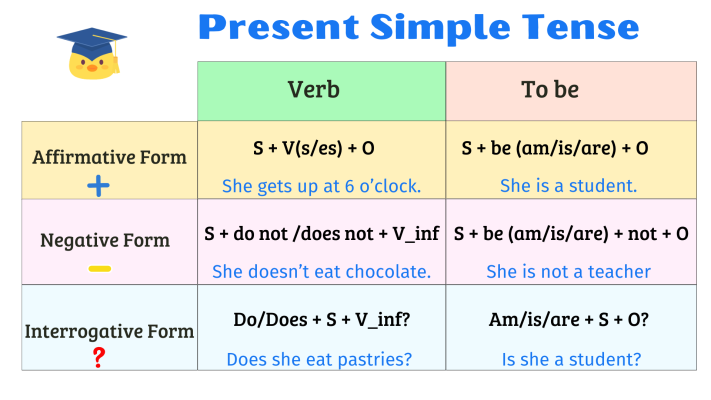Table of Contents
1. Understanding Present Perfect Tense
The Present Perfect Tense is a grammatical tense used to describe actions or events that have occurred at some indefinite point in the past but have relevance to the present moment. It is often used to convey experiences, accomplishments, or changes that have taken place before now.
In English, the Present Perfect Tense is formed by using the present tense of the auxiliary verb “have” (have/has) followed by the past participle form of the main verb.
For regular verbs, the past participle is usually formed by adding “-ed” to the base form of the verb, while irregular verbs have unique past participle forms.
Here are some examples of sentences in the Present Perfect Tense:
1.”I have visited Paris.” (The action of visiting Paris occurred at an unspecified time in the past, but it has relevance to the present moment.)
2. “She has finished her homework.” (The action of finishing homework occurred in the past, and the result is relevant to the present.)
3. “They have lived here for five years.” (The action of living here began in the past and continues up to the present moment.)
4. “He has eaten lunch already.” (The action of eating lunch happened in the past, but the result (having eaten) is relevant to the present moment.)
Overall, the Present Perfect Tense is used to connect the past with the present and to emphasize the importance of past actions or events in relation to the current situation.
2. Forming Present Perfect Tense
The three forms of the Present Perfect Tense are used to construct sentences in different ways to convey actions or events that occurred at an unspecified time in the past but have relevance to the present moment. Here’s what each form means:

2.1 Affirmative (+) :
The affirmative form of the Present Perfect Tense is used to state that an action or event has occurred. It is formed using the present tense of the auxiliary verb “have” (have/has) followed by the past participle form of the main verb. For regular verbs, the past participle is usually formed by adding “-ed” to the base form of the verb, while irregular verbs have unique past participle forms.
For example:
– “I have visited Paris.” (Affirmative statement indicating that the action of visiting Paris has occurred.)
– “She has finished her homework.” (Affirmative statement indicating that the action of finishing homework has occurred.)
– “They have lived here for five years.” (Affirmative statement indicating that the action of living here has occurred for a specific duration.)
2.2 Negative (-):
The negative form of the Present Perfect Tense is used to state that an action or event has not occurred. It is formed by adding “not” after the present tense of the auxiliary verb “have” (have/has). For example:
– “I have not visited Paris.” (Negative statement indicating that the action of visiting Paris has not occurred.)
– “She has not finished her homework.” (Negative statement indicating that the action of finishing homework has not occurred.)
– “They have not lived here for five years.” (Negative statement indicating that the action of living here for a specific duration has not occurred.)
2.3 Interrogative(?):
The interrogative form of the Present Perfect Tense is used to ask questions about actions or events that have occurred. It is formed by inverting the present tense of the auxiliary verb “have” (have/has) with the subject.
For example:
– “Have you visited Paris?” (Interrogative question asking if the action of visiting Paris has occurred.)
– “Has she finished her homework?” (Interrogative question asking if the action of finishing homework has occurred.)
– “Have they lived here for five years?” (Interrogative question asking if the action of living here for a specific duration has occurred.)
In summary, the affirmative form states that an action or event has occurred, the negative form states that an action or event has not occurred, and the interrogative form asks questions about actions or events that have occurred in the Present Perfect Tense.
3. Recognizing signal words for the Present Perfect Tense
To recognize the Present Perfect Tense in English sentences, you can look for several key indicators:
- Use of “have” or “has”: The presence of the auxiliary verbs “have” (for the first-person singular, second-person singular, and plural subjects) or “has” (for the third-person singular subject) is a clear sign of the Present Perfect Tense.
For example:
“I have visited Paris.”
“She has finished her homework.”
- Past Participle Form of the Verb: The main verb in the Present Perfect Tense is in the past participle form, which is typically formed by adding “-ed” to regular verbs or using irregular past participles.
For example:
“I have eaten lunch.” (Past participle form of the verb “eat”)
“They have gone home.” (Past participle form of the verb “go”)
- Time Expressions: The Present Perfect Tense is often used with time expressions that indicate actions or events that occurred at an unspecified time in the past but have relevance to the present moment. These expressions include “just,” “already,” “yet,” “ever,” “never,” “recently,” “so far,” “up to now,” etc.
For example:
“I have just finished my work.”
“She has already left for the airport.”
- Indication of Completed Actions: The Present Perfect Tense is used to describe actions or events that were completed at some indefinite point in the past but have relevance to the present. Sentences in the Present Perfect Tense often convey a sense of completion or connection to the present moment.
For example:
“We have studied for the exam.” (The action of studying is completed, but it has relevance to the exam, which may be in the future or the present.)
By paying attention to these indicators and contextual clues, you can easily recognize when the Present Perfect Tense is being used in English sentences.
Learn more:
- Present Simple Tense
- Present Continuous Tense
- Present Perfect Tense
- Present Perfect Continuous Tense
Past Tense
- Simple Past Tense
- Past Continuous Tense
- Past Perfect Tense
- Past Perfect Continuous Tense
Future Tense
-
- Simple Future Tense
- Future Continuous Tense
- Future Perfect Tense
- Future Perfect Continuous Tense


